NÉLIDA MENDOZA'S IDENTITY SYSTEMS
Nélida Mendoza is an artist who was born in Paraguay, but lived in several parts of the world, including Argentina and Italy. She is presenting the exhibition Fuerte Olimpo and Other Stories at the gallery K / Arte y Naturaleza during the Pinta Sud | ASU 2024 art week.
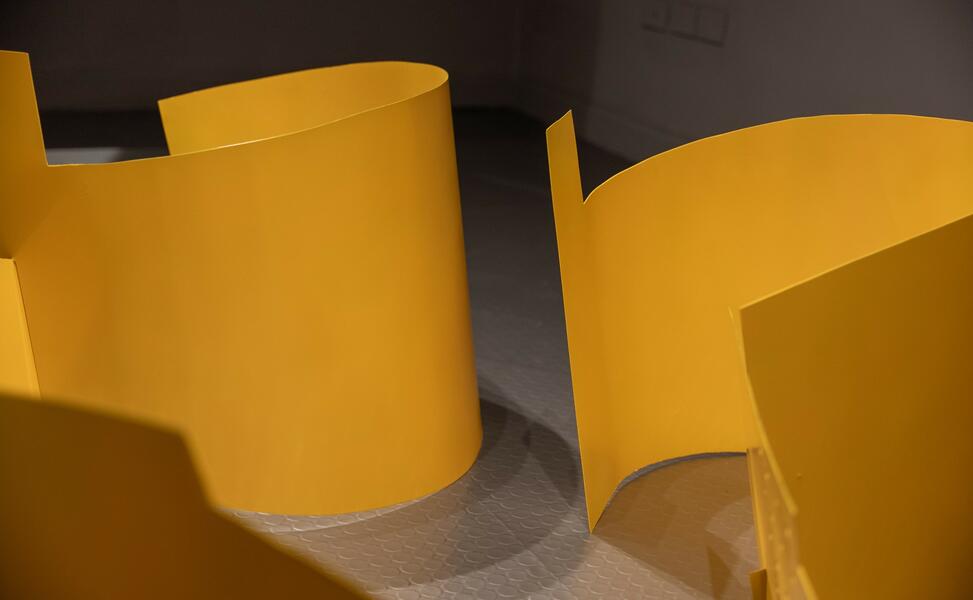
In what way do you feel traveling and migration influences your work?
I was practically born in a suitcase because my whole family was from Asuncion and later, we were political refugees in Buenos Aires, Argentina. In the 1980's I went first to Rome where my sister was living, and then to Carrara, where I spent 15 years working with stone. I have lived in Sicily since 1993, where and I move between Palermo and the Taormina area.
The trip arouses my curiosity: it is the most important thing, my research image. At the beginning I attributed it to an identity concept because my mother was the wife of an exile, she lived at home without much social life and her greatest desire was always to return to Asuncion to see her parents. This feeling was present at home and then transferred to my research: I always look for a distant image, of something that is kilometers away.
Living in Argentina, my family always went back to Asunción, and that means so many things. We would go to my grandparents' place because didn't have a house of our own: we would go from house to house, and that was transferred to my identity later on. It is more interesting and important -I always tell my students- to try to eat anything, to investigate, to be open, to sleep anywhere, to know, to listen and to see how some things for us are tacit and actually for others they are not.
Being open to new experiences...
Most of all, being open to a dialogue of interpreting the other. The world is rich in people, we have to understand that what we are trying to say can be said in different ways.
Could you talk about your participation in the Sicilian soundscape study network and how this experience has influenced your work?
We founded it in Sicily with Stefano Zorzanello who is an Italian musician and who has always worked on the basis of the experiments that Murray Schafer did on the Soundscape. Zorzanello mainly tries to make people aware to know how to hear with an ecological system of listening.
This project started with few resources and today it is an international project, used by many artists. In the region, this type of mechanism is used a lot, mainly because of the volcano, and also because it is an island with a lot of movement of people, so we experiment from there. Alessandro Aiello also comes from there, but he is more dedicated to the attention and sound of words more associated to a social and political context.
What is your exhibition "Fuerte Olimpo and other stories" for this edition of Pinta Sud | ASU at K Arte y Naturaleza gallery about?
Years ago, architect Anibal Cardoso Ocampo was working on a restoration project for Fort Borbón, located in the city of Fuerte Olimpo, in northern Paraguay, almost on the border with Bolivia. It is a beautiful fort, abandoned, which has not been restored. There, I could see another time, where nature is imminent, the river is a highway; but then the system of life they have there, the way of communicating, is also different. The place caught my attention so I thought of doing a project on Fuerte Olimpo.
Then the project was born with Fernando Moure -the curator of the gallery K /Arte y Naturaleza- with whom I had worked on other occasions.
The border is a traction for me. A traction system, borders where the temperature rises depending on whether you can pass or not. The images presented in this exhibition are elaborated with a sound design system, where the sound is representing some imagenes: the act of waiting, the anxieties of whether you will be able to pass or not, the dialogues in the bus, the last part of Argentina where you start listening to the radio of Asuncion and my mother got excited. The project has the collaboration of Alessandro Aiello and Juanchi Franco.
The entire exhibition is crossed by ten audios -it is a Soundscape- that accompanies a site-specific sculpture that I made with yellow steel. The yellow has great prominence in this exhibition because the walls of the Olimpo wall are "invaded" by the honeycombs of bees. People take the stones out of the wall to get some honey. And also, because we traveled in an airplane very early in the morning where the sun invaded the plane and that was my initial image.
In addition, in the 1980s I donated a sculpture "Margina" in Carrara marble to the city of Asuncion. After several events, this sculpture arrived at the Manzana de la Rivera, where it is currently located.
The Gallery K / Arte y Naturaleza, for this exhibition, has been responsible for bringing from Buenos Aires, a series of my works, contemporary to this marble "Margina". These works arrived from Italy to Buenos Aires, several years ago. So, we wanted to give a space to this story of "works that wander" and will be exhibited in one of the rooms of the gallery with a video documentary that tells this kind of journey of the works of Carrara to Asuncion.
How do you see the interplay between nature and new technologies? Are they in opposition to each other?
No, I don't contrast them. I am passionate about new technologies. I find it essential to work in collaboration and co-participation, which is difficult. Everything that is new excites me, but I come from a past generation, where thinking and ways of reasoning had other structures, but I can always collaborate for a new vision. I work with many young people at the university and I am passionate about this dialogue. But I think you always have to be careful when inserting yourself in new systems, because they do not detach themselves from the old ones, there is no such isolation of the new from the old. And you have to pay attention to what things get lost along the way.
What language do you think in?
I've always wondered, I don't know. Lately I have been coming to Asuncion every year, so I speak more in Spanish, but I am always a foreigner when it comes to language: it is a very difficult frontier to cross. I have a lot of mixture between Spanish, Italian and English. It doesn't bother me, it's enough that they understand me and I understand them, but when it comes to identities it's more difficult to understand. In the installation of "Olimpo y otras historias" we use some sounds recordings of myself thinking and speaking in Spanish.
May interest you
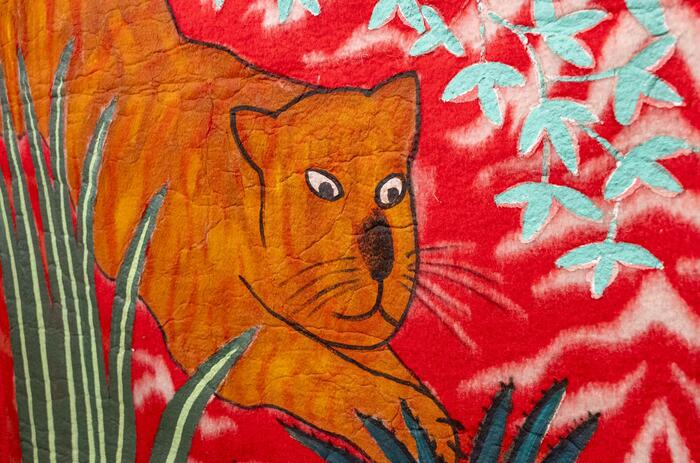
Pinta Sud | ASU 2024 presented at the Casa Mayor gallery the exhibition Warm Heart, with works by the Paraguayan artist Feliciano Centurión. It is a collection of works from different periods of his career and is curated by Irene Gelfman.
FELICIANO CENTURIÓN'S WARM HEART
Pinta Sud | ASU 2024 presented at the Casa Mayor gallery the exhibition Warm Heart, with works by the Paraguayan artist Feliciano Centurión. It is a collection of works from different periods of his career and is curated by Irene Gelfman.

Pinta Sud | ASU 2024 presented at the Casa Mayor gallery the exhibition Warm Heart, with works by the Paraguayan artist Feliciano Centurión. It is a collection of works from different periods of his career and is curated by Irene Gelfman.
FELICIANO CENTURIÓN'S WARM HEART
Pinta Sud | ASU 2024 presented at the Casa Mayor gallery the exhibition Warm Heart, with works by the Paraguayan artist Feliciano Centurión. It is a collection of works from different periods of his career and is curated by Irene Gelfman.
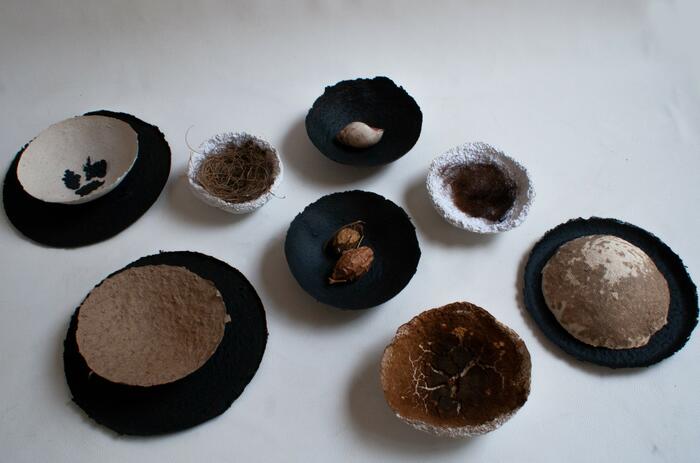
Gustavo Benítez presents at Exaedro the exhibition Damiana vuelve a casa (Damiana returns home), an exhibition that explores a story of identity, pain and abandonment. It is presented in the context of the art week Pinta Sud | ASU 2024, from August 5 to 11, and is curated by Ticio Escobar.
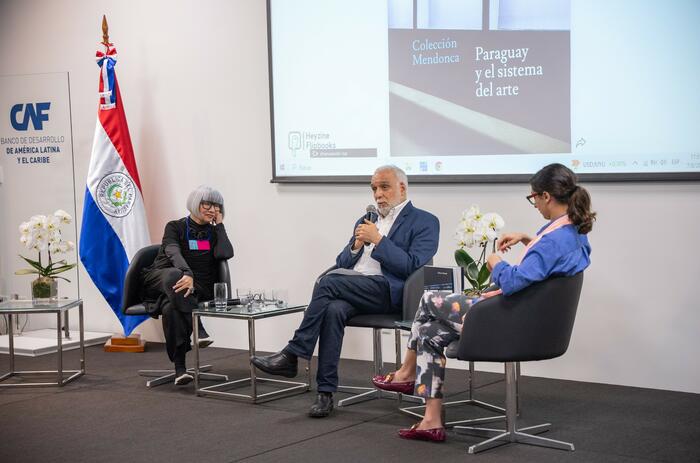
Within the framework of Pinta Sud | ASU 2024 FORO conversatory, Ticio Escobar - moderated by Irene Gelfman - participated in the exclusive presentation of the book "Colección Mendonca. Paraguay and the art system", by Adriana Almada. The book was presented at CAF - Development Bank of Latin America and the Caribbean.
PARAGUAY AND THE ART SYSTEM
Within the framework of Pinta Sud | ASU 2024 FORO conversatory, Ticio Escobar - moderated by Irene Gelfman - participated in the exclusive presentation of the book "Colección Mendonca. Paraguay and the art system", by Adriana Almada. The book was presented at CAF - Development Bank of Latin America and the Caribbean.
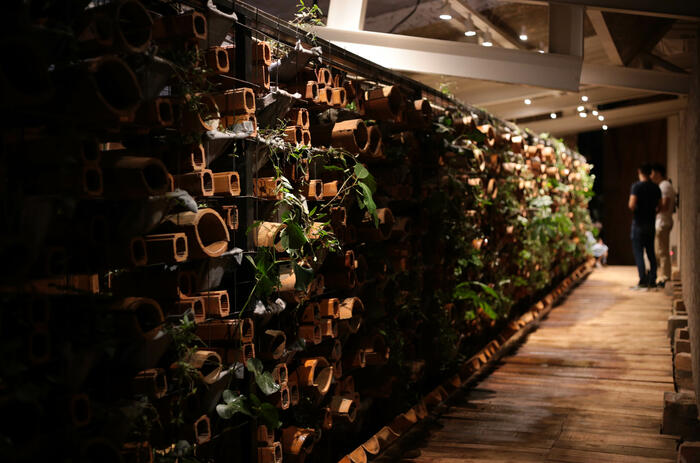
Fundación Texo presents the return of its most important and ambitious program, #Seleccion5. This initiative highlights the value of contemporary Paraguayan architecture, presenting an exhibition project of outstanding local studios and professionals.
TEXO FOUNDATION AND THE ARCHITECTURE PROJECT #SELECCION5
Fundación Texo presents the return of its most important and ambitious program, #Seleccion5. This initiative highlights the value of contemporary Paraguayan architecture, presenting an exhibition project of outstanding local studios and professionals.

Luciérnagas humanas al ras de la tierra (Human fireflies at ground level) is a video-installation that the artist Marcos Benítez presents at the Paraguayan-German Cultural Institute. It is curated by Adriana Almada and will be part of the art week of Asunción Pinta Sud | ASU 2024.
THE INSTALLATION OF MARCOS BENITEZ AT ICPA
Luciérnagas humanas al ras de la tierra (Human fireflies at ground level) is a video-installation that the artist Marcos Benítez presents at the Paraguayan-German Cultural Institute. It is curated by Adriana Almada and will be part of the art week of Asunción Pinta Sud | ASU 2024.
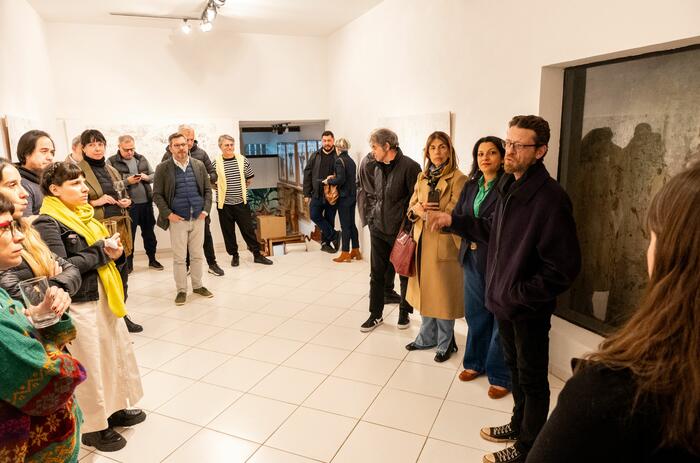
The third and last edition of Art Week Asuncion presented by Pinta Sud | ASU starts today August 5 with an ambitious cultural program, curated by Adriana Almada and accompanied by Irene Gelfman, featuring exhibitions, curatorial programs, lecture series and events.
PINTA Sud | ASU ART WEEK IN ASUNCION
The third and last edition of Art Week Asuncion presented by Pinta Sud | ASU starts today August 5 with an ambitious cultural program, curated by Adriana Almada and accompanied by Irene Gelfman, featuring exhibitions, curatorial programs, lecture series and events.
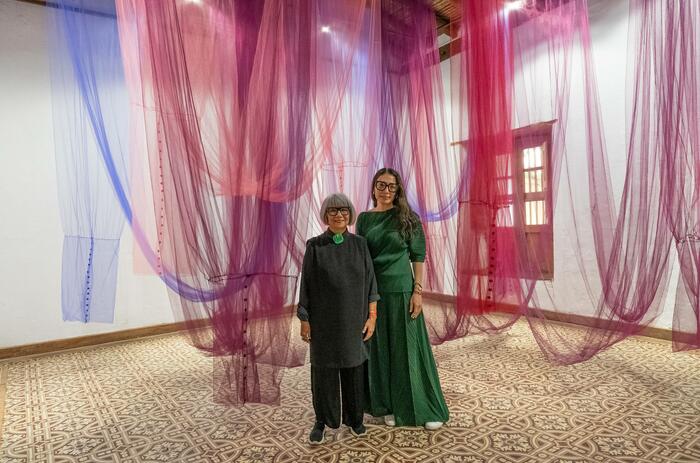
Paraguayan artist Claudia Casarino will be part of the opening of the Pinta Sud | ASU 2024 art week, from August 5 to 11, 2024. In a conversation with Arte al Día, she explains her link with Paraguay, the body and clothing to tell stories that reinterpret the universe of women.
CLAUDIA CASARINO: "EVERYTHING IS BORN FROM PERSONAL AND FAMILY NARRATIVES"
Paraguayan artist Claudia Casarino will be part of the opening of the Pinta Sud | ASU 2024 art week, from August 5 to 11, 2024. In a conversation with Arte al Día, she explains her link with Paraguay, the body and clothing to tell stories that reinterpret the universe of women.

The third edition of Pinta Sud | ASU 2024 came to an end after a day of ceramic workshop in Itá with the renowned ceramist Julia Isídrez.
PINTA Sud | ASU CLOSED ITS THIRD EDITION AT JULIA ISÍDREZ'S WORKSHOP IN ITÁ
The third edition of Pinta Sud | ASU 2024 came to an end after a day of ceramic workshop in Itá with the renowned ceramist Julia Isídrez.

The third edition of Pinta Sud | ASU featured for the first time the Young Curators Program, under the leadership of Adriana Almada. In a conversation with Arte al Día, the two selected participants -Majo Fiorio and Luis Ocampos Pompa- shared their experience throughout the process.
YOUNG CURATORS PROGRAM IN PINTA Sud | ASU 2024
The third edition of Pinta Sud | ASU featured for the first time the Young Curators Program, under the leadership of Adriana Almada. In a conversation with Arte al Día, the two selected participants -Majo Fiorio and Luis Ocampos Pompa- shared their experience throughout the process.
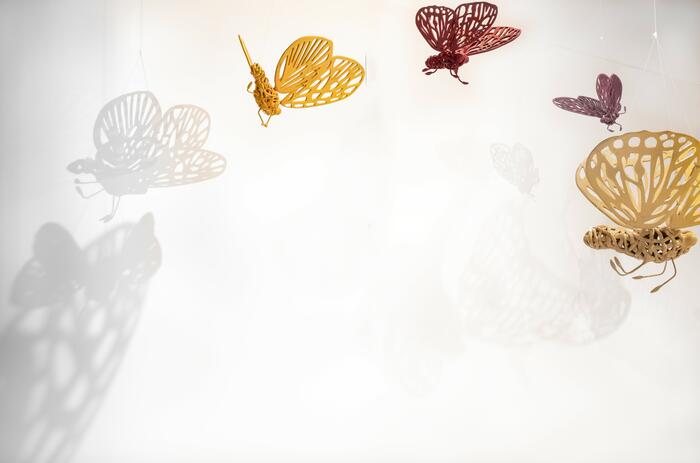
Banco Macro presented El Oro de los sueños (The Gold of Dreams), the exhibition by Andrés Paredes which is part of a new artistic program within its agenda at the Corporate Tower. The program is called Macro Federal, an initiative to present artists from all the provinces of Argentina, starting with Misiones. It is curated by Patricia Rizzo.
THE GOLD OF DREAMS: ANDRÉS PAREDES AT THE MACRO TOWER
Banco Macro presented El Oro de los sueños (The Gold of Dreams), the exhibition by Andrés Paredes which is part of a new artistic program within its agenda at the Corporate Tower. The program is called Macro Federal, an initiative to present artists from all the provinces of Argentina, starting with Misiones. It is curated by Patricia Rizzo.

The Jewish Museum of Buenos Aires | Templo Libertad presented Falta compartida (Shared Absence), an exhibition that took place at the Rolf Gallery in 2019 as part of the commemoration of the 25th anniversary of the attack on the AMIA (Asociación Mutual Israelita Argentina), which itinerates on the occasion of the 30th anniversary, presenting itself as a reflection on the post-memory of recurring traumatic events in Argentine history.
SHARED ABSENCE – AN EXHIBITION OF COLLECTIVE MEMORY
The Jewish Museum of Buenos Aires | Templo Libertad presented Falta compartida (Shared Absence), an exhibition that took place at the Rolf Gallery in 2019 as part of the commemoration of the 25th anniversary of the attack on the AMIA (Asociación Mutual Israelita Argentina), which itinerates on the occasion of the 30th anniversary, presenting itself as a reflection on the post-memory of recurring traumatic events in Argentine history.

Malba announces the eagerly awaited arrival of Leonora Carrington's The Distractions of Dagoberto (1945), one of the most significant works by the celebrated surrealist artist, which was acquired in May by Eduardo F. Costantini at Sotheby's at a record price.
LEONORA CARRINGTON ARRIVES AT MALBA AFTER BREAKING RECORDS
Malba announces the eagerly awaited arrival of Leonora Carrington's The Distractions of Dagoberto (1945), one of the most significant works by the celebrated surrealist artist, which was acquired in May by Eduardo F. Costantini at Sotheby's at a record price.
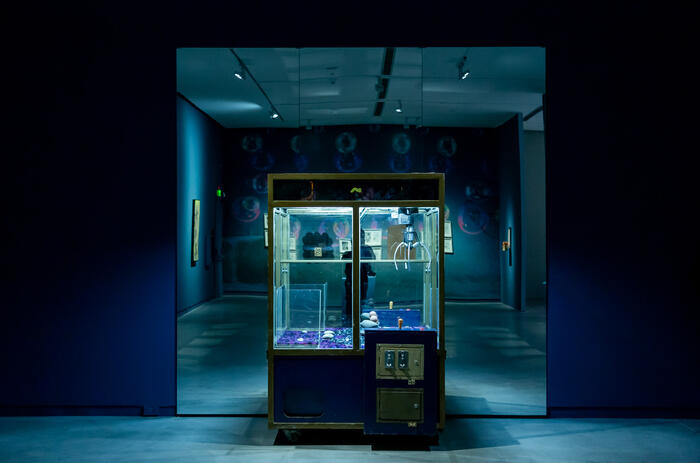
The Museo Moderno de Buenos Aires inaugurates the exhibition Martín Legón: Solo las piedras recuerdan (Only Stones Remember), in which the artist interrogates the present of human experience and wonders how human beings relate to images, how we construct knowledge, and in what remote place the mark of the human as it is known to the present will remain.
MARTÍN LEGÓN - IMAGES IN TENSION
The Museo Moderno de Buenos Aires inaugurates the exhibition Martín Legón: Solo las piedras recuerdan (Only Stones Remember), in which the artist interrogates the present of human experience and wonders how human beings relate to images, how we construct knowledge, and in what remote place the mark of the human as it is known to the present will remain.
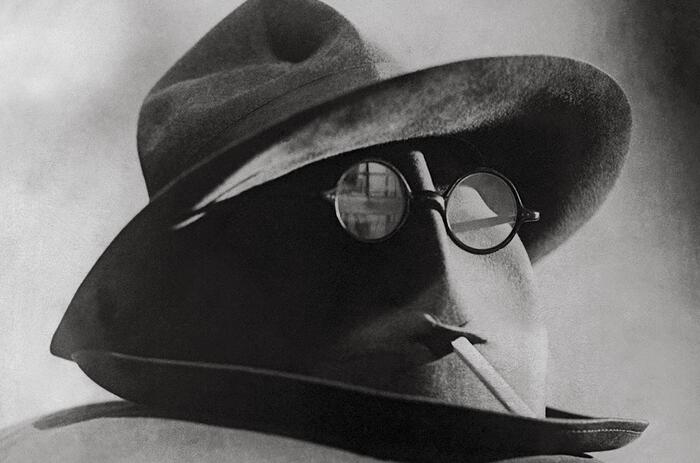
The most relevant art fair specialized in photography in Latin America Pinta BAphoto celebrates its twenty years of trajectory between October 24 and 27, 2024. Based in the city of Buenos Aires, it has established itself as an undisputed point of reference for photography.
20 YEARS OF PINTA BAphoto – THE CELEBRATION OF A VISION
The most relevant art fair specialized in photography in Latin America Pinta BAphoto celebrates its twenty years of trajectory between October 24 and 27, 2024. Based in the city of Buenos Aires, it has established itself as an undisputed point of reference for photography.

PAV Parco Arte Vivente presented the first solo exhibition in Italy by the Ecuadorian artist Adrián Balseca (1989) curated by Marco Scotini. The exhibition is an investigation into the role of the human being as an actor within the ecosystem, focussing on the relationships between the economy, ecology and memory as well as on the dynamics of power linked to the extractivism and exploitation of nature.
ADRIÁN BALSECA IN ITALY – NATURE, POWER AND EXPLOITATION
PAV Parco Arte Vivente presented the first solo exhibition in Italy by the Ecuadorian artist Adrián Balseca (1989) curated by Marco Scotini. The exhibition is an investigation into the role of the human being as an actor within the ecosystem, focussing on the relationships between the economy, ecology and memory as well as on the dynamics of power linked to the extractivism and exploitation of nature.

Pinta Sud | ASU 2024 presented at the Casa Mayor gallery the exhibition Warm Heart, with works by the Paraguayan artist Feliciano Centurión. It is a collection of works from different periods of his career and is curated by Irene Gelfman.
FELICIANO CENTURIÓN'S WARM HEART
Pinta Sud | ASU 2024 presented at the Casa Mayor gallery the exhibition Warm Heart, with works by the Paraguayan artist Feliciano Centurión. It is a collection of works from different periods of his career and is curated by Irene Gelfman.

Gustavo Benítez presents at Exaedro the exhibition Damiana vuelve a casa (Damiana returns home), an exhibition that explores a story of identity, pain and abandonment. It is presented in the context of the art week Pinta Sud | ASU 2024, from August 5 to 11, and is curated by Ticio Escobar.

Within the framework of Pinta Sud | ASU 2024 FORO conversatory, Ticio Escobar - moderated by Irene Gelfman - participated in the exclusive presentation of the book "Colección Mendonca. Paraguay and the art system", by Adriana Almada. The book was presented at CAF - Development Bank of Latin America and the Caribbean.
PARAGUAY AND THE ART SYSTEM
Within the framework of Pinta Sud | ASU 2024 FORO conversatory, Ticio Escobar - moderated by Irene Gelfman - participated in the exclusive presentation of the book "Colección Mendonca. Paraguay and the art system", by Adriana Almada. The book was presented at CAF - Development Bank of Latin America and the Caribbean.

Fundación Texo presents the return of its most important and ambitious program, #Seleccion5. This initiative highlights the value of contemporary Paraguayan architecture, presenting an exhibition project of outstanding local studios and professionals.
TEXO FOUNDATION AND THE ARCHITECTURE PROJECT #SELECCION5
Fundación Texo presents the return of its most important and ambitious program, #Seleccion5. This initiative highlights the value of contemporary Paraguayan architecture, presenting an exhibition project of outstanding local studios and professionals.

Luciérnagas humanas al ras de la tierra (Human fireflies at ground level) is a video-installation that the artist Marcos Benítez presents at the Paraguayan-German Cultural Institute. It is curated by Adriana Almada and will be part of the art week of Asunción Pinta Sud | ASU 2024.
THE INSTALLATION OF MARCOS BENITEZ AT ICPA
Luciérnagas humanas al ras de la tierra (Human fireflies at ground level) is a video-installation that the artist Marcos Benítez presents at the Paraguayan-German Cultural Institute. It is curated by Adriana Almada and will be part of the art week of Asunción Pinta Sud | ASU 2024.

The third and last edition of Art Week Asuncion presented by Pinta Sud | ASU starts today August 5 with an ambitious cultural program, curated by Adriana Almada and accompanied by Irene Gelfman, featuring exhibitions, curatorial programs, lecture series and events.
PINTA Sud | ASU ART WEEK IN ASUNCION
The third and last edition of Art Week Asuncion presented by Pinta Sud | ASU starts today August 5 with an ambitious cultural program, curated by Adriana Almada and accompanied by Irene Gelfman, featuring exhibitions, curatorial programs, lecture series and events.

Paraguayan artist Claudia Casarino will be part of the opening of the Pinta Sud | ASU 2024 art week, from August 5 to 11, 2024. In a conversation with Arte al Día, she explains her link with Paraguay, the body and clothing to tell stories that reinterpret the universe of women.
CLAUDIA CASARINO: "EVERYTHING IS BORN FROM PERSONAL AND FAMILY NARRATIVES"
Paraguayan artist Claudia Casarino will be part of the opening of the Pinta Sud | ASU 2024 art week, from August 5 to 11, 2024. In a conversation with Arte al Día, she explains her link with Paraguay, the body and clothing to tell stories that reinterpret the universe of women.

The third edition of Pinta Sud | ASU 2024 came to an end after a day of ceramic workshop in Itá with the renowned ceramist Julia Isídrez.
PINTA Sud | ASU CLOSED ITS THIRD EDITION AT JULIA ISÍDREZ'S WORKSHOP IN ITÁ
The third edition of Pinta Sud | ASU 2024 came to an end after a day of ceramic workshop in Itá with the renowned ceramist Julia Isídrez.

The third edition of Pinta Sud | ASU featured for the first time the Young Curators Program, under the leadership of Adriana Almada. In a conversation with Arte al Día, the two selected participants -Majo Fiorio and Luis Ocampos Pompa- shared their experience throughout the process.
YOUNG CURATORS PROGRAM IN PINTA Sud | ASU 2024
The third edition of Pinta Sud | ASU featured for the first time the Young Curators Program, under the leadership of Adriana Almada. In a conversation with Arte al Día, the two selected participants -Majo Fiorio and Luis Ocampos Pompa- shared their experience throughout the process.

Banco Macro presented El Oro de los sueños (The Gold of Dreams), the exhibition by Andrés Paredes which is part of a new artistic program within its agenda at the Corporate Tower. The program is called Macro Federal, an initiative to present artists from all the provinces of Argentina, starting with Misiones. It is curated by Patricia Rizzo.
THE GOLD OF DREAMS: ANDRÉS PAREDES AT THE MACRO TOWER
Banco Macro presented El Oro de los sueños (The Gold of Dreams), the exhibition by Andrés Paredes which is part of a new artistic program within its agenda at the Corporate Tower. The program is called Macro Federal, an initiative to present artists from all the provinces of Argentina, starting with Misiones. It is curated by Patricia Rizzo.

The Jewish Museum of Buenos Aires | Templo Libertad presented Falta compartida (Shared Absence), an exhibition that took place at the Rolf Gallery in 2019 as part of the commemoration of the 25th anniversary of the attack on the AMIA (Asociación Mutual Israelita Argentina), which itinerates on the occasion of the 30th anniversary, presenting itself as a reflection on the post-memory of recurring traumatic events in Argentine history.
SHARED ABSENCE – AN EXHIBITION OF COLLECTIVE MEMORY
The Jewish Museum of Buenos Aires | Templo Libertad presented Falta compartida (Shared Absence), an exhibition that took place at the Rolf Gallery in 2019 as part of the commemoration of the 25th anniversary of the attack on the AMIA (Asociación Mutual Israelita Argentina), which itinerates on the occasion of the 30th anniversary, presenting itself as a reflection on the post-memory of recurring traumatic events in Argentine history.

Malba announces the eagerly awaited arrival of Leonora Carrington's The Distractions of Dagoberto (1945), one of the most significant works by the celebrated surrealist artist, which was acquired in May by Eduardo F. Costantini at Sotheby's at a record price.
LEONORA CARRINGTON ARRIVES AT MALBA AFTER BREAKING RECORDS
Malba announces the eagerly awaited arrival of Leonora Carrington's The Distractions of Dagoberto (1945), one of the most significant works by the celebrated surrealist artist, which was acquired in May by Eduardo F. Costantini at Sotheby's at a record price.

The Museo Moderno de Buenos Aires inaugurates the exhibition Martín Legón: Solo las piedras recuerdan (Only Stones Remember), in which the artist interrogates the present of human experience and wonders how human beings relate to images, how we construct knowledge, and in what remote place the mark of the human as it is known to the present will remain.
MARTÍN LEGÓN - IMAGES IN TENSION
The Museo Moderno de Buenos Aires inaugurates the exhibition Martín Legón: Solo las piedras recuerdan (Only Stones Remember), in which the artist interrogates the present of human experience and wonders how human beings relate to images, how we construct knowledge, and in what remote place the mark of the human as it is known to the present will remain.

The most relevant art fair specialized in photography in Latin America Pinta BAphoto celebrates its twenty years of trajectory between October 24 and 27, 2024. Based in the city of Buenos Aires, it has established itself as an undisputed point of reference for photography.
20 YEARS OF PINTA BAphoto – THE CELEBRATION OF A VISION
The most relevant art fair specialized in photography in Latin America Pinta BAphoto celebrates its twenty years of trajectory between October 24 and 27, 2024. Based in the city of Buenos Aires, it has established itself as an undisputed point of reference for photography.

PAV Parco Arte Vivente presented the first solo exhibition in Italy by the Ecuadorian artist Adrián Balseca (1989) curated by Marco Scotini. The exhibition is an investigation into the role of the human being as an actor within the ecosystem, focussing on the relationships between the economy, ecology and memory as well as on the dynamics of power linked to the extractivism and exploitation of nature.
ADRIÁN BALSECA IN ITALY – NATURE, POWER AND EXPLOITATION
PAV Parco Arte Vivente presented the first solo exhibition in Italy by the Ecuadorian artist Adrián Balseca (1989) curated by Marco Scotini. The exhibition is an investigation into the role of the human being as an actor within the ecosystem, focussing on the relationships between the economy, ecology and memory as well as on the dynamics of power linked to the extractivism and exploitation of nature.

Pinta Sud | ASU 2024 presented at the Casa Mayor gallery the exhibition Warm Heart, with works by the Paraguayan artist Feliciano Centurión. It is a collection of works from different periods of his career and is curated by Irene Gelfman.
FELICIANO CENTURIÓN'S WARM HEART
Pinta Sud | ASU 2024 presented at the Casa Mayor gallery the exhibition Warm Heart, with works by the Paraguayan artist Feliciano Centurión. It is a collection of works from different periods of his career and is curated by Irene Gelfman.

Gustavo Benítez presents at Exaedro the exhibition Damiana vuelve a casa (Damiana returns home), an exhibition that explores a story of identity, pain and abandonment. It is presented in the context of the art week Pinta Sud | ASU 2024, from August 5 to 11, and is curated by Ticio Escobar.

Within the framework of Pinta Sud | ASU 2024 FORO conversatory, Ticio Escobar - moderated by Irene Gelfman - participated in the exclusive presentation of the book "Colección Mendonca. Paraguay and the art system", by Adriana Almada. The book was presented at CAF - Development Bank of Latin America and the Caribbean.
PARAGUAY AND THE ART SYSTEM
Within the framework of Pinta Sud | ASU 2024 FORO conversatory, Ticio Escobar - moderated by Irene Gelfman - participated in the exclusive presentation of the book "Colección Mendonca. Paraguay and the art system", by Adriana Almada. The book was presented at CAF - Development Bank of Latin America and the Caribbean.

Fundación Texo presents the return of its most important and ambitious program, #Seleccion5. This initiative highlights the value of contemporary Paraguayan architecture, presenting an exhibition project of outstanding local studios and professionals.
TEXO FOUNDATION AND THE ARCHITECTURE PROJECT #SELECCION5
Fundación Texo presents the return of its most important and ambitious program, #Seleccion5. This initiative highlights the value of contemporary Paraguayan architecture, presenting an exhibition project of outstanding local studios and professionals.

Luciérnagas humanas al ras de la tierra (Human fireflies at ground level) is a video-installation that the artist Marcos Benítez presents at the Paraguayan-German Cultural Institute. It is curated by Adriana Almada and will be part of the art week of Asunción Pinta Sud | ASU 2024.
THE INSTALLATION OF MARCOS BENITEZ AT ICPA
Luciérnagas humanas al ras de la tierra (Human fireflies at ground level) is a video-installation that the artist Marcos Benítez presents at the Paraguayan-German Cultural Institute. It is curated by Adriana Almada and will be part of the art week of Asunción Pinta Sud | ASU 2024.

The third and last edition of Art Week Asuncion presented by Pinta Sud | ASU starts today August 5 with an ambitious cultural program, curated by Adriana Almada and accompanied by Irene Gelfman, featuring exhibitions, curatorial programs, lecture series and events.
PINTA Sud | ASU ART WEEK IN ASUNCION
The third and last edition of Art Week Asuncion presented by Pinta Sud | ASU starts today August 5 with an ambitious cultural program, curated by Adriana Almada and accompanied by Irene Gelfman, featuring exhibitions, curatorial programs, lecture series and events.

Paraguayan artist Claudia Casarino will be part of the opening of the Pinta Sud | ASU 2024 art week, from August 5 to 11, 2024. In a conversation with Arte al Día, she explains her link with Paraguay, the body and clothing to tell stories that reinterpret the universe of women.
CLAUDIA CASARINO: "EVERYTHING IS BORN FROM PERSONAL AND FAMILY NARRATIVES"
Paraguayan artist Claudia Casarino will be part of the opening of the Pinta Sud | ASU 2024 art week, from August 5 to 11, 2024. In a conversation with Arte al Día, she explains her link with Paraguay, the body and clothing to tell stories that reinterpret the universe of women.

The third edition of Pinta Sud | ASU 2024 came to an end after a day of ceramic workshop in Itá with the renowned ceramist Julia Isídrez.
PINTA Sud | ASU CLOSED ITS THIRD EDITION AT JULIA ISÍDREZ'S WORKSHOP IN ITÁ
The third edition of Pinta Sud | ASU 2024 came to an end after a day of ceramic workshop in Itá with the renowned ceramist Julia Isídrez.

The third edition of Pinta Sud | ASU featured for the first time the Young Curators Program, under the leadership of Adriana Almada. In a conversation with Arte al Día, the two selected participants -Majo Fiorio and Luis Ocampos Pompa- shared their experience throughout the process.
YOUNG CURATORS PROGRAM IN PINTA Sud | ASU 2024
The third edition of Pinta Sud | ASU featured for the first time the Young Curators Program, under the leadership of Adriana Almada. In a conversation with Arte al Día, the two selected participants -Majo Fiorio and Luis Ocampos Pompa- shared their experience throughout the process.

Banco Macro presented El Oro de los sueños (The Gold of Dreams), the exhibition by Andrés Paredes which is part of a new artistic program within its agenda at the Corporate Tower. The program is called Macro Federal, an initiative to present artists from all the provinces of Argentina, starting with Misiones. It is curated by Patricia Rizzo.
THE GOLD OF DREAMS: ANDRÉS PAREDES AT THE MACRO TOWER
Banco Macro presented El Oro de los sueños (The Gold of Dreams), the exhibition by Andrés Paredes which is part of a new artistic program within its agenda at the Corporate Tower. The program is called Macro Federal, an initiative to present artists from all the provinces of Argentina, starting with Misiones. It is curated by Patricia Rizzo.

The Jewish Museum of Buenos Aires | Templo Libertad presented Falta compartida (Shared Absence), an exhibition that took place at the Rolf Gallery in 2019 as part of the commemoration of the 25th anniversary of the attack on the AMIA (Asociación Mutual Israelita Argentina), which itinerates on the occasion of the 30th anniversary, presenting itself as a reflection on the post-memory of recurring traumatic events in Argentine history.
SHARED ABSENCE – AN EXHIBITION OF COLLECTIVE MEMORY
The Jewish Museum of Buenos Aires | Templo Libertad presented Falta compartida (Shared Absence), an exhibition that took place at the Rolf Gallery in 2019 as part of the commemoration of the 25th anniversary of the attack on the AMIA (Asociación Mutual Israelita Argentina), which itinerates on the occasion of the 30th anniversary, presenting itself as a reflection on the post-memory of recurring traumatic events in Argentine history.

Malba announces the eagerly awaited arrival of Leonora Carrington's The Distractions of Dagoberto (1945), one of the most significant works by the celebrated surrealist artist, which was acquired in May by Eduardo F. Costantini at Sotheby's at a record price.
LEONORA CARRINGTON ARRIVES AT MALBA AFTER BREAKING RECORDS
Malba announces the eagerly awaited arrival of Leonora Carrington's The Distractions of Dagoberto (1945), one of the most significant works by the celebrated surrealist artist, which was acquired in May by Eduardo F. Costantini at Sotheby's at a record price.

The Museo Moderno de Buenos Aires inaugurates the exhibition Martín Legón: Solo las piedras recuerdan (Only Stones Remember), in which the artist interrogates the present of human experience and wonders how human beings relate to images, how we construct knowledge, and in what remote place the mark of the human as it is known to the present will remain.
MARTÍN LEGÓN - IMAGES IN TENSION
The Museo Moderno de Buenos Aires inaugurates the exhibition Martín Legón: Solo las piedras recuerdan (Only Stones Remember), in which the artist interrogates the present of human experience and wonders how human beings relate to images, how we construct knowledge, and in what remote place the mark of the human as it is known to the present will remain.

The most relevant art fair specialized in photography in Latin America Pinta BAphoto celebrates its twenty years of trajectory between October 24 and 27, 2024. Based in the city of Buenos Aires, it has established itself as an undisputed point of reference for photography.
20 YEARS OF PINTA BAphoto – THE CELEBRATION OF A VISION
The most relevant art fair specialized in photography in Latin America Pinta BAphoto celebrates its twenty years of trajectory between October 24 and 27, 2024. Based in the city of Buenos Aires, it has established itself as an undisputed point of reference for photography.

PAV Parco Arte Vivente presented the first solo exhibition in Italy by the Ecuadorian artist Adrián Balseca (1989) curated by Marco Scotini. The exhibition is an investigation into the role of the human being as an actor within the ecosystem, focussing on the relationships between the economy, ecology and memory as well as on the dynamics of power linked to the extractivism and exploitation of nature.
ADRIÁN BALSECA IN ITALY – NATURE, POWER AND EXPLOITATION
PAV Parco Arte Vivente presented the first solo exhibition in Italy by the Ecuadorian artist Adrián Balseca (1989) curated by Marco Scotini. The exhibition is an investigation into the role of the human being as an actor within the ecosystem, focussing on the relationships between the economy, ecology and memory as well as on the dynamics of power linked to the extractivism and exploitation of nature.

Pinta Sud | ASU 2024 presented at the Casa Mayor gallery the exhibition Warm Heart, with works by the Paraguayan artist Feliciano Centurión. It is a collection of works from different periods of his career and is curated by Irene Gelfman.
FELICIANO CENTURIÓN'S WARM HEART
Pinta Sud | ASU 2024 presented at the Casa Mayor gallery the exhibition Warm Heart, with works by the Paraguayan artist Feliciano Centurión. It is a collection of works from different periods of his career and is curated by Irene Gelfman.

Gustavo Benítez presents at Exaedro the exhibition Damiana vuelve a casa (Damiana returns home), an exhibition that explores a story of identity, pain and abandonment. It is presented in the context of the art week Pinta Sud | ASU 2024, from August 5 to 11, and is curated by Ticio Escobar.

Within the framework of Pinta Sud | ASU 2024 FORO conversatory, Ticio Escobar - moderated by Irene Gelfman - participated in the exclusive presentation of the book "Colección Mendonca. Paraguay and the art system", by Adriana Almada. The book was presented at CAF - Development Bank of Latin America and the Caribbean.
PARAGUAY AND THE ART SYSTEM
Within the framework of Pinta Sud | ASU 2024 FORO conversatory, Ticio Escobar - moderated by Irene Gelfman - participated in the exclusive presentation of the book "Colección Mendonca. Paraguay and the art system", by Adriana Almada. The book was presented at CAF - Development Bank of Latin America and the Caribbean.

Fundación Texo presents the return of its most important and ambitious program, #Seleccion5. This initiative highlights the value of contemporary Paraguayan architecture, presenting an exhibition project of outstanding local studios and professionals.
TEXO FOUNDATION AND THE ARCHITECTURE PROJECT #SELECCION5
Fundación Texo presents the return of its most important and ambitious program, #Seleccion5. This initiative highlights the value of contemporary Paraguayan architecture, presenting an exhibition project of outstanding local studios and professionals.

Luciérnagas humanas al ras de la tierra (Human fireflies at ground level) is a video-installation that the artist Marcos Benítez presents at the Paraguayan-German Cultural Institute. It is curated by Adriana Almada and will be part of the art week of Asunción Pinta Sud | ASU 2024.
THE INSTALLATION OF MARCOS BENITEZ AT ICPA
Luciérnagas humanas al ras de la tierra (Human fireflies at ground level) is a video-installation that the artist Marcos Benítez presents at the Paraguayan-German Cultural Institute. It is curated by Adriana Almada and will be part of the art week of Asunción Pinta Sud | ASU 2024.

The third and last edition of Art Week Asuncion presented by Pinta Sud | ASU starts today August 5 with an ambitious cultural program, curated by Adriana Almada and accompanied by Irene Gelfman, featuring exhibitions, curatorial programs, lecture series and events.
PINTA Sud | ASU ART WEEK IN ASUNCION
The third and last edition of Art Week Asuncion presented by Pinta Sud | ASU starts today August 5 with an ambitious cultural program, curated by Adriana Almada and accompanied by Irene Gelfman, featuring exhibitions, curatorial programs, lecture series and events.

Paraguayan artist Claudia Casarino will be part of the opening of the Pinta Sud | ASU 2024 art week, from August 5 to 11, 2024. In a conversation with Arte al Día, she explains her link with Paraguay, the body and clothing to tell stories that reinterpret the universe of women.
CLAUDIA CASARINO: "EVERYTHING IS BORN FROM PERSONAL AND FAMILY NARRATIVES"
Paraguayan artist Claudia Casarino will be part of the opening of the Pinta Sud | ASU 2024 art week, from August 5 to 11, 2024. In a conversation with Arte al Día, she explains her link with Paraguay, the body and clothing to tell stories that reinterpret the universe of women.

The third edition of Pinta Sud | ASU 2024 came to an end after a day of ceramic workshop in Itá with the renowned ceramist Julia Isídrez.
PINTA Sud | ASU CLOSED ITS THIRD EDITION AT JULIA ISÍDREZ'S WORKSHOP IN ITÁ
The third edition of Pinta Sud | ASU 2024 came to an end after a day of ceramic workshop in Itá with the renowned ceramist Julia Isídrez.

The third edition of Pinta Sud | ASU featured for the first time the Young Curators Program, under the leadership of Adriana Almada. In a conversation with Arte al Día, the two selected participants -Majo Fiorio and Luis Ocampos Pompa- shared their experience throughout the process.
YOUNG CURATORS PROGRAM IN PINTA Sud | ASU 2024
The third edition of Pinta Sud | ASU featured for the first time the Young Curators Program, under the leadership of Adriana Almada. In a conversation with Arte al Día, the two selected participants -Majo Fiorio and Luis Ocampos Pompa- shared their experience throughout the process.

Banco Macro presented El Oro de los sueños (The Gold of Dreams), the exhibition by Andrés Paredes which is part of a new artistic program within its agenda at the Corporate Tower. The program is called Macro Federal, an initiative to present artists from all the provinces of Argentina, starting with Misiones. It is curated by Patricia Rizzo.
THE GOLD OF DREAMS: ANDRÉS PAREDES AT THE MACRO TOWER
Banco Macro presented El Oro de los sueños (The Gold of Dreams), the exhibition by Andrés Paredes which is part of a new artistic program within its agenda at the Corporate Tower. The program is called Macro Federal, an initiative to present artists from all the provinces of Argentina, starting with Misiones. It is curated by Patricia Rizzo.

The Jewish Museum of Buenos Aires | Templo Libertad presented Falta compartida (Shared Absence), an exhibition that took place at the Rolf Gallery in 2019 as part of the commemoration of the 25th anniversary of the attack on the AMIA (Asociación Mutual Israelita Argentina), which itinerates on the occasion of the 30th anniversary, presenting itself as a reflection on the post-memory of recurring traumatic events in Argentine history.
SHARED ABSENCE – AN EXHIBITION OF COLLECTIVE MEMORY
The Jewish Museum of Buenos Aires | Templo Libertad presented Falta compartida (Shared Absence), an exhibition that took place at the Rolf Gallery in 2019 as part of the commemoration of the 25th anniversary of the attack on the AMIA (Asociación Mutual Israelita Argentina), which itinerates on the occasion of the 30th anniversary, presenting itself as a reflection on the post-memory of recurring traumatic events in Argentine history.

Malba announces the eagerly awaited arrival of Leonora Carrington's The Distractions of Dagoberto (1945), one of the most significant works by the celebrated surrealist artist, which was acquired in May by Eduardo F. Costantini at Sotheby's at a record price.
LEONORA CARRINGTON ARRIVES AT MALBA AFTER BREAKING RECORDS
Malba announces the eagerly awaited arrival of Leonora Carrington's The Distractions of Dagoberto (1945), one of the most significant works by the celebrated surrealist artist, which was acquired in May by Eduardo F. Costantini at Sotheby's at a record price.

The Museo Moderno de Buenos Aires inaugurates the exhibition Martín Legón: Solo las piedras recuerdan (Only Stones Remember), in which the artist interrogates the present of human experience and wonders how human beings relate to images, how we construct knowledge, and in what remote place the mark of the human as it is known to the present will remain.
MARTÍN LEGÓN - IMAGES IN TENSION
The Museo Moderno de Buenos Aires inaugurates the exhibition Martín Legón: Solo las piedras recuerdan (Only Stones Remember), in which the artist interrogates the present of human experience and wonders how human beings relate to images, how we construct knowledge, and in what remote place the mark of the human as it is known to the present will remain.

The most relevant art fair specialized in photography in Latin America Pinta BAphoto celebrates its twenty years of trajectory between October 24 and 27, 2024. Based in the city of Buenos Aires, it has established itself as an undisputed point of reference for photography.
20 YEARS OF PINTA BAphoto – THE CELEBRATION OF A VISION
The most relevant art fair specialized in photography in Latin America Pinta BAphoto celebrates its twenty years of trajectory between October 24 and 27, 2024. Based in the city of Buenos Aires, it has established itself as an undisputed point of reference for photography.

PAV Parco Arte Vivente presented the first solo exhibition in Italy by the Ecuadorian artist Adrián Balseca (1989) curated by Marco Scotini. The exhibition is an investigation into the role of the human being as an actor within the ecosystem, focussing on the relationships between the economy, ecology and memory as well as on the dynamics of power linked to the extractivism and exploitation of nature.
ADRIÁN BALSECA IN ITALY – NATURE, POWER AND EXPLOITATION
PAV Parco Arte Vivente presented the first solo exhibition in Italy by the Ecuadorian artist Adrián Balseca (1989) curated by Marco Scotini. The exhibition is an investigation into the role of the human being as an actor within the ecosystem, focussing on the relationships between the economy, ecology and memory as well as on the dynamics of power linked to the extractivism and exploitation of nature.

Pinta Sud | ASU 2024 presented at the Casa Mayor gallery the exhibition Warm Heart, with works by the Paraguayan artist Feliciano Centurión. It is a collection of works from different periods of his career and is curated by Irene Gelfman.
FELICIANO CENTURIÓN'S WARM HEART
Pinta Sud | ASU 2024 presented at the Casa Mayor gallery the exhibition Warm Heart, with works by the Paraguayan artist Feliciano Centurión. It is a collection of works from different periods of his career and is curated by Irene Gelfman.

Gustavo Benítez presents at Exaedro the exhibition Damiana vuelve a casa (Damiana returns home), an exhibition that explores a story of identity, pain and abandonment. It is presented in the context of the art week Pinta Sud | ASU 2024, from August 5 to 11, and is curated by Ticio Escobar.

Within the framework of Pinta Sud | ASU 2024 FORO conversatory, Ticio Escobar - moderated by Irene Gelfman - participated in the exclusive presentation of the book "Colección Mendonca. Paraguay and the art system", by Adriana Almada. The book was presented at CAF - Development Bank of Latin America and the Caribbean.
PARAGUAY AND THE ART SYSTEM
Within the framework of Pinta Sud | ASU 2024 FORO conversatory, Ticio Escobar - moderated by Irene Gelfman - participated in the exclusive presentation of the book "Colección Mendonca. Paraguay and the art system", by Adriana Almada. The book was presented at CAF - Development Bank of Latin America and the Caribbean.

Fundación Texo presents the return of its most important and ambitious program, #Seleccion5. This initiative highlights the value of contemporary Paraguayan architecture, presenting an exhibition project of outstanding local studios and professionals.
TEXO FOUNDATION AND THE ARCHITECTURE PROJECT #SELECCION5
Fundación Texo presents the return of its most important and ambitious program, #Seleccion5. This initiative highlights the value of contemporary Paraguayan architecture, presenting an exhibition project of outstanding local studios and professionals.

Luciérnagas humanas al ras de la tierra (Human fireflies at ground level) is a video-installation that the artist Marcos Benítez presents at the Paraguayan-German Cultural Institute. It is curated by Adriana Almada and will be part of the art week of Asunción Pinta Sud | ASU 2024.
THE INSTALLATION OF MARCOS BENITEZ AT ICPA
Luciérnagas humanas al ras de la tierra (Human fireflies at ground level) is a video-installation that the artist Marcos Benítez presents at the Paraguayan-German Cultural Institute. It is curated by Adriana Almada and will be part of the art week of Asunción Pinta Sud | ASU 2024.

The third and last edition of Art Week Asuncion presented by Pinta Sud | ASU starts today August 5 with an ambitious cultural program, curated by Adriana Almada and accompanied by Irene Gelfman, featuring exhibitions, curatorial programs, lecture series and events.
PINTA Sud | ASU ART WEEK IN ASUNCION
The third and last edition of Art Week Asuncion presented by Pinta Sud | ASU starts today August 5 with an ambitious cultural program, curated by Adriana Almada and accompanied by Irene Gelfman, featuring exhibitions, curatorial programs, lecture series and events.

Paraguayan artist Claudia Casarino will be part of the opening of the Pinta Sud | ASU 2024 art week, from August 5 to 11, 2024. In a conversation with Arte al Día, she explains her link with Paraguay, the body and clothing to tell stories that reinterpret the universe of women.
CLAUDIA CASARINO: "EVERYTHING IS BORN FROM PERSONAL AND FAMILY NARRATIVES"
Paraguayan artist Claudia Casarino will be part of the opening of the Pinta Sud | ASU 2024 art week, from August 5 to 11, 2024. In a conversation with Arte al Día, she explains her link with Paraguay, the body and clothing to tell stories that reinterpret the universe of women.

The third edition of Pinta Sud | ASU 2024 came to an end after a day of ceramic workshop in Itá with the renowned ceramist Julia Isídrez.
PINTA Sud | ASU CLOSED ITS THIRD EDITION AT JULIA ISÍDREZ'S WORKSHOP IN ITÁ
The third edition of Pinta Sud | ASU 2024 came to an end after a day of ceramic workshop in Itá with the renowned ceramist Julia Isídrez.

The third edition of Pinta Sud | ASU featured for the first time the Young Curators Program, under the leadership of Adriana Almada. In a conversation with Arte al Día, the two selected participants -Majo Fiorio and Luis Ocampos Pompa- shared their experience throughout the process.
YOUNG CURATORS PROGRAM IN PINTA Sud | ASU 2024
The third edition of Pinta Sud | ASU featured for the first time the Young Curators Program, under the leadership of Adriana Almada. In a conversation with Arte al Día, the two selected participants -Majo Fiorio and Luis Ocampos Pompa- shared their experience throughout the process.

Banco Macro presented El Oro de los sueños (The Gold of Dreams), the exhibition by Andrés Paredes which is part of a new artistic program within its agenda at the Corporate Tower. The program is called Macro Federal, an initiative to present artists from all the provinces of Argentina, starting with Misiones. It is curated by Patricia Rizzo.
THE GOLD OF DREAMS: ANDRÉS PAREDES AT THE MACRO TOWER
Banco Macro presented El Oro de los sueños (The Gold of Dreams), the exhibition by Andrés Paredes which is part of a new artistic program within its agenda at the Corporate Tower. The program is called Macro Federal, an initiative to present artists from all the provinces of Argentina, starting with Misiones. It is curated by Patricia Rizzo.

The Jewish Museum of Buenos Aires | Templo Libertad presented Falta compartida (Shared Absence), an exhibition that took place at the Rolf Gallery in 2019 as part of the commemoration of the 25th anniversary of the attack on the AMIA (Asociación Mutual Israelita Argentina), which itinerates on the occasion of the 30th anniversary, presenting itself as a reflection on the post-memory of recurring traumatic events in Argentine history.
SHARED ABSENCE – AN EXHIBITION OF COLLECTIVE MEMORY
The Jewish Museum of Buenos Aires | Templo Libertad presented Falta compartida (Shared Absence), an exhibition that took place at the Rolf Gallery in 2019 as part of the commemoration of the 25th anniversary of the attack on the AMIA (Asociación Mutual Israelita Argentina), which itinerates on the occasion of the 30th anniversary, presenting itself as a reflection on the post-memory of recurring traumatic events in Argentine history.

Malba announces the eagerly awaited arrival of Leonora Carrington's The Distractions of Dagoberto (1945), one of the most significant works by the celebrated surrealist artist, which was acquired in May by Eduardo F. Costantini at Sotheby's at a record price.
LEONORA CARRINGTON ARRIVES AT MALBA AFTER BREAKING RECORDS
Malba announces the eagerly awaited arrival of Leonora Carrington's The Distractions of Dagoberto (1945), one of the most significant works by the celebrated surrealist artist, which was acquired in May by Eduardo F. Costantini at Sotheby's at a record price.

The Museo Moderno de Buenos Aires inaugurates the exhibition Martín Legón: Solo las piedras recuerdan (Only Stones Remember), in which the artist interrogates the present of human experience and wonders how human beings relate to images, how we construct knowledge, and in what remote place the mark of the human as it is known to the present will remain.
MARTÍN LEGÓN - IMAGES IN TENSION
The Museo Moderno de Buenos Aires inaugurates the exhibition Martín Legón: Solo las piedras recuerdan (Only Stones Remember), in which the artist interrogates the present of human experience and wonders how human beings relate to images, how we construct knowledge, and in what remote place the mark of the human as it is known to the present will remain.

The most relevant art fair specialized in photography in Latin America Pinta BAphoto celebrates its twenty years of trajectory between October 24 and 27, 2024. Based in the city of Buenos Aires, it has established itself as an undisputed point of reference for photography.
20 YEARS OF PINTA BAphoto – THE CELEBRATION OF A VISION
The most relevant art fair specialized in photography in Latin America Pinta BAphoto celebrates its twenty years of trajectory between October 24 and 27, 2024. Based in the city of Buenos Aires, it has established itself as an undisputed point of reference for photography.

PAV Parco Arte Vivente presented the first solo exhibition in Italy by the Ecuadorian artist Adrián Balseca (1989) curated by Marco Scotini. The exhibition is an investigation into the role of the human being as an actor within the ecosystem, focussing on the relationships between the economy, ecology and memory as well as on the dynamics of power linked to the extractivism and exploitation of nature.
ADRIÁN BALSECA IN ITALY – NATURE, POWER AND EXPLOITATION
PAV Parco Arte Vivente presented the first solo exhibition in Italy by the Ecuadorian artist Adrián Balseca (1989) curated by Marco Scotini. The exhibition is an investigation into the role of the human being as an actor within the ecosystem, focussing on the relationships between the economy, ecology and memory as well as on the dynamics of power linked to the extractivism and exploitation of nature.


